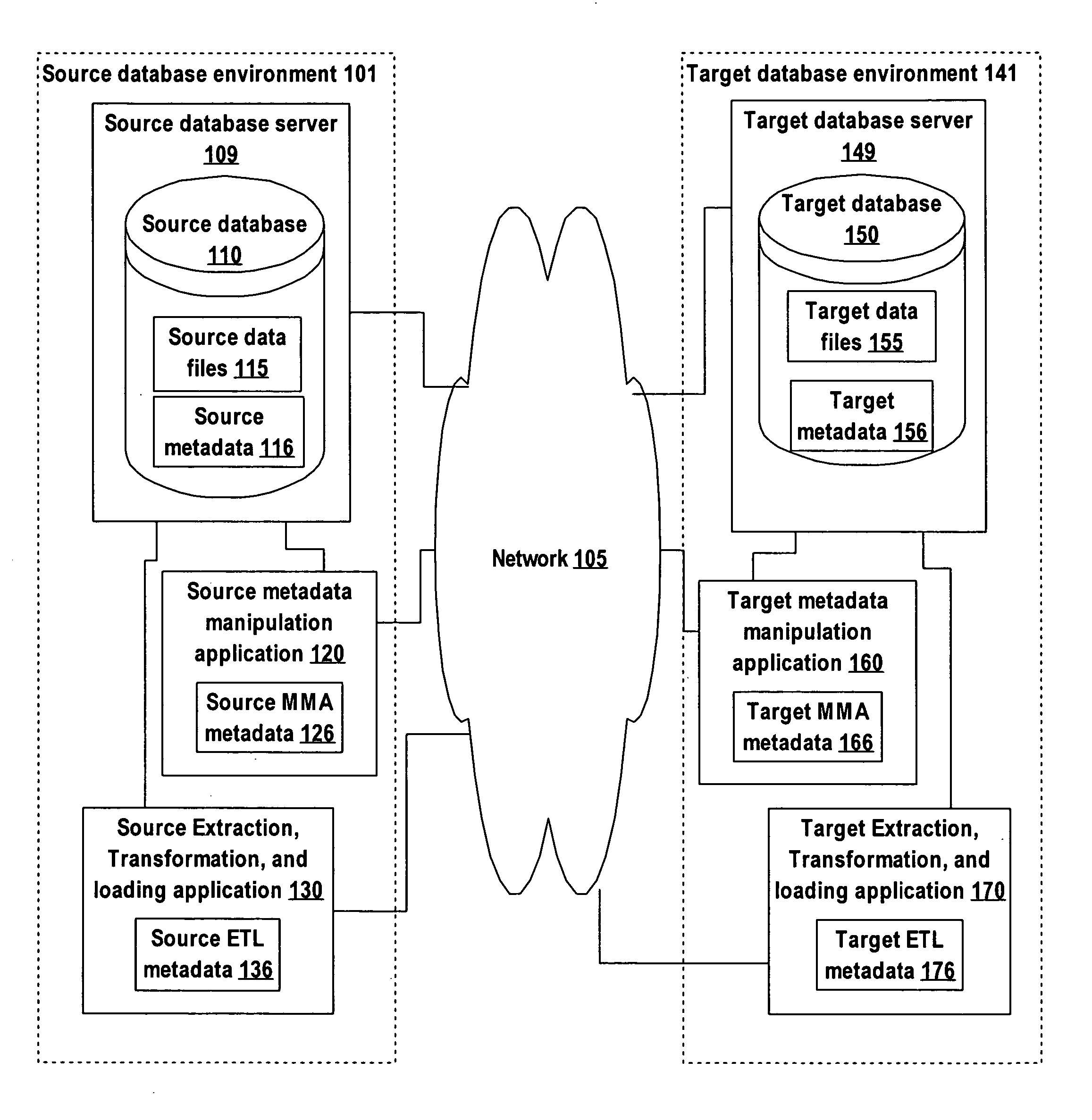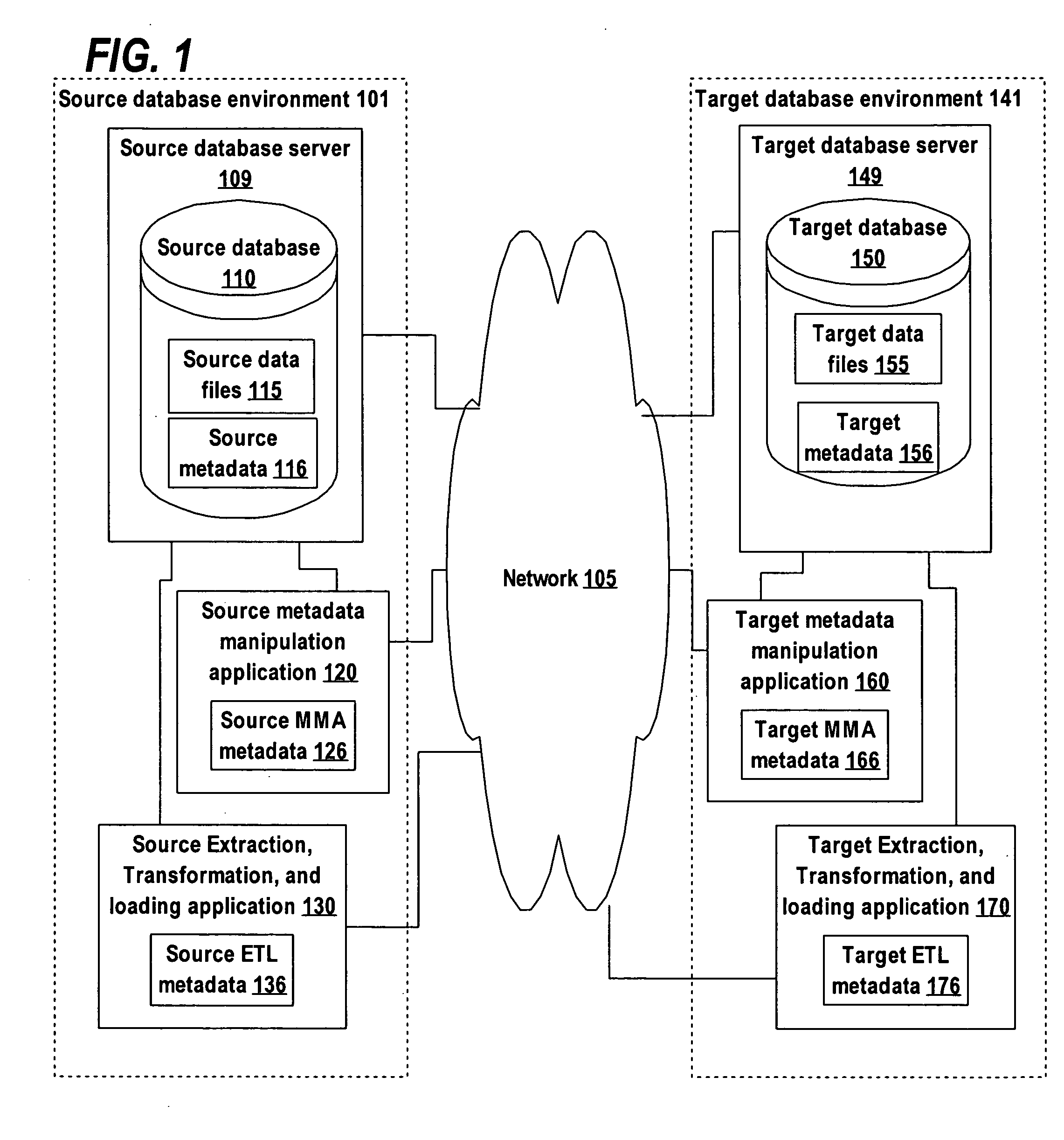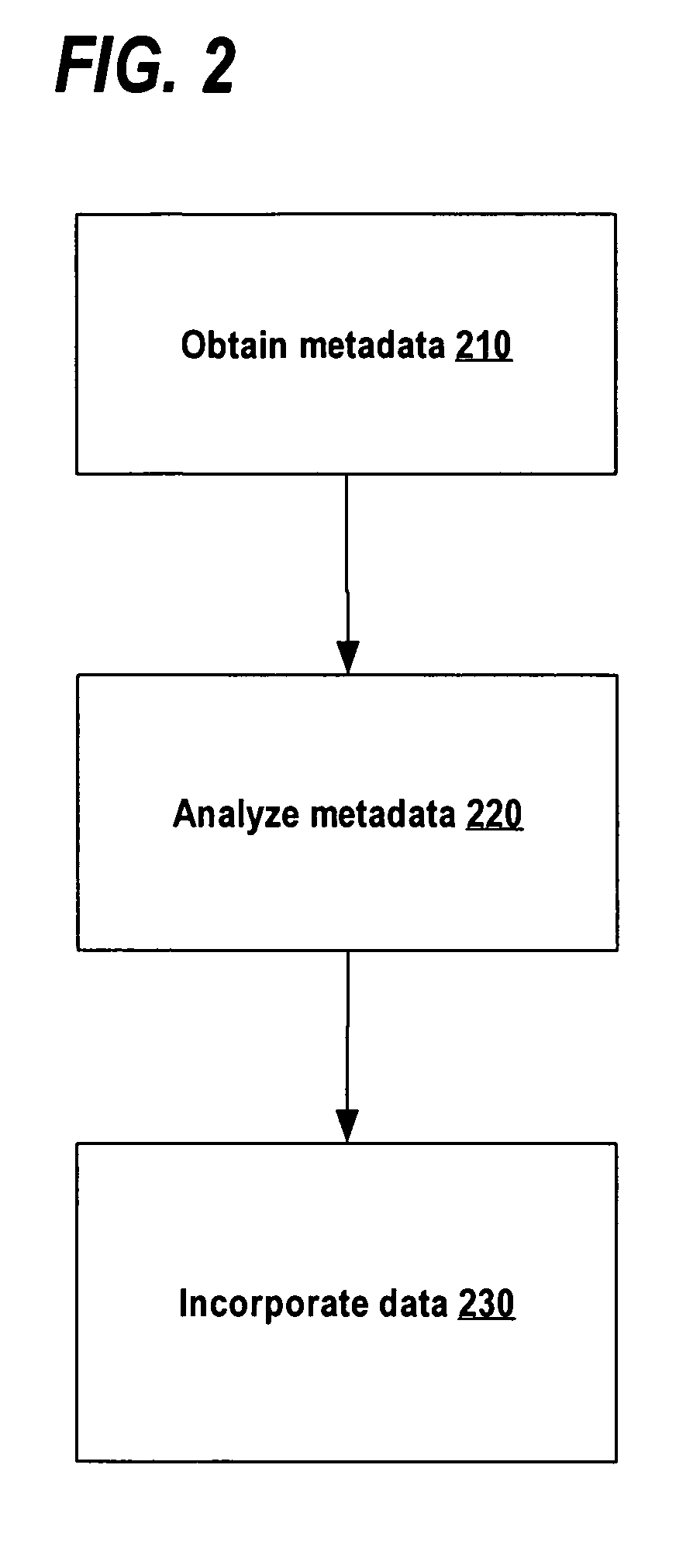Modularized extraction, transformation, and loading for a database
a database and module technology, applied in the field of database systems, can solve the problems of large network, time and processing overhead, and the inability to execute an insert command for each exported record, and achieve the effect of reducing the number of export files, and reducing the number of exports
- Summary
- Abstract
- Description
- Claims
- Application Information
AI Technical Summary
Benefits of technology
Problems solved by technology
Method used
Image
Examples
Embodiment Construction
[0017] A method and apparatus for loading database data into a target database is described. In the following description, for the purposes of explanation, numerous specific details are set forth in order to provide a thorough understanding of the present invention. It will be apparent, however, that the present invention may be practiced without these specific details. In other instances, well-known structures and devices are shown in block diagram form in order to avoid unnecessarily obscuring the present invention.
GENERAL SUMMARY
[0018] Consider a source database environment and a target database environment each including a database and two applications communicatively coupled to the database: a metadata manipulation application (MMA) and an extraction, transform, and loading (ETL) application. The MMA and ETL applications allow one to add, delete, and modify the data and metadata in the corresponding database. The metadata for each application resides in a location accessible ...
PUM
 Login to View More
Login to View More Abstract
Description
Claims
Application Information
 Login to View More
Login to View More - R&D
- Intellectual Property
- Life Sciences
- Materials
- Tech Scout
- Unparalleled Data Quality
- Higher Quality Content
- 60% Fewer Hallucinations
Browse by: Latest US Patents, China's latest patents, Technical Efficacy Thesaurus, Application Domain, Technology Topic, Popular Technical Reports.
© 2025 PatSnap. All rights reserved.Legal|Privacy policy|Modern Slavery Act Transparency Statement|Sitemap|About US| Contact US: help@patsnap.com



